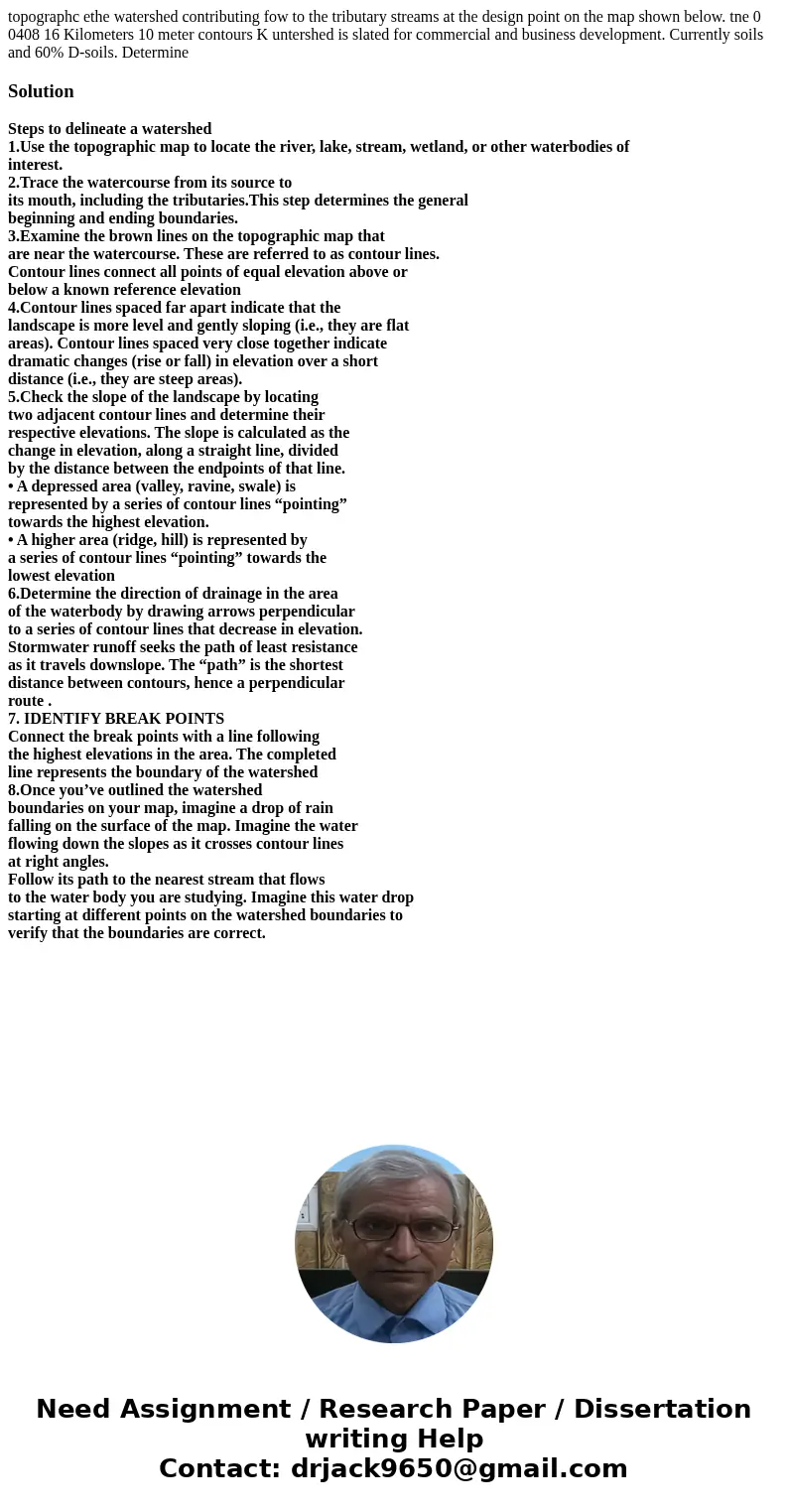topographc ethe watershed contributing fow to the tributary
Solution
Steps to delineate a watershed
1.Use the topographic map to locate the river, lake, stream, wetland, or other waterbodies of
interest.
2.Trace the watercourse from its source to
its mouth, including the tributaries.This step determines the general
beginning and ending boundaries.
3.Examine the brown lines on the topographic map that
are near the watercourse. These are referred to as contour lines.
Contour lines connect all points of equal elevation above or
below a known reference elevation
4.Contour lines spaced far apart indicate that the
landscape is more level and gently sloping (i.e., they are flat
areas). Contour lines spaced very close together indicate
dramatic changes (rise or fall) in elevation over a short
distance (i.e., they are steep areas).
5.Check the slope of the landscape by locating
two adjacent contour lines and determine their
respective elevations. The slope is calculated as the
change in elevation, along a straight line, divided
by the distance between the endpoints of that line.
• A depressed area (valley, ravine, swale) is
represented by a series of contour lines “pointing”
towards the highest elevation.
• A higher area (ridge, hill) is represented by
a series of contour lines “pointing” towards the
lowest elevation
6.Determine the direction of drainage in the area
of the waterbody by drawing arrows perpendicular
to a series of contour lines that decrease in elevation.
Stormwater runoff seeks the path of least resistance
as it travels downslope. The “path” is the shortest
distance between contours, hence a perpendicular
route .
7. IDENTIFY BREAK POINTS
Connect the break points with a line following
the highest elevations in the area. The completed
line represents the boundary of the watershed
8.Once you’ve outlined the watershed
boundaries on your map, imagine a drop of rain
falling on the surface of the map. Imagine the water
flowing down the slopes as it crosses contour lines
at right angles.
Follow its path to the nearest stream that flows
to the water body you are studying. Imagine this water drop
starting at different points on the watershed boundaries to
verify that the boundaries are correct.

 Homework Sourse
Homework Sourse